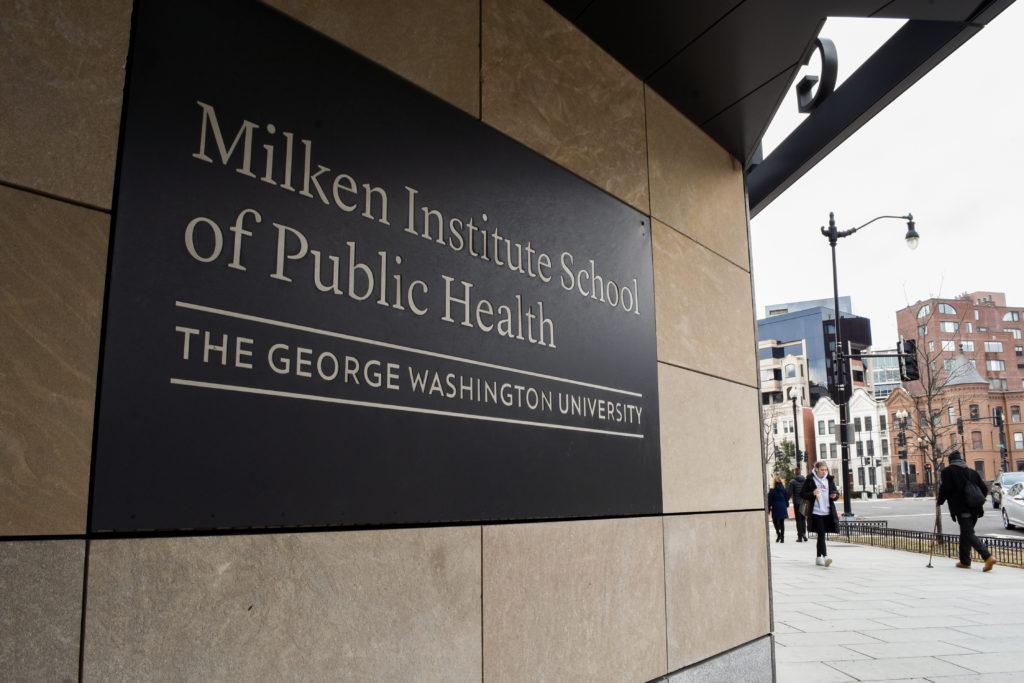Updated: May 27, 2020 at 12:02 p.m.
Researchers at the Milken Institute School of Public Health developed a tool earlier this month to determine the number of COVID-19 contact tracers needed to reopen society in the United States.
The tool estimates a total of 165,000 contact tracers – people who help identify those who have come in contact with COVID-19 – are needed to reopen the country. Researchers involved in developing the tool said it will help health care officials plan ahead to determine the most accurate number of contact tracers needed to limit the spread of the outbreak.
Edward Salsberg, a professor of health policy and management, said many of the previous national projections of contact tracers needed were based on population-based ratios used in other states and countries and applied to the United States, instead of using tools that were designed specifically for the United States.
“We understood that many communities more severely affected by COVID-19 would need a higher number of contact tracers because of the increased number of cases,” he said in an email. “We wanted a tool that factored in the number of cases into the estimate of the contact tracing workforce.”
Salsberg said the two Health Workforce Research Centers led by Patricia Pittman, the director of the Fitzhugh Mullan Institute for Health Workforce Equity, supported the work on the tool. He said the U.S. government’s Health Resources Services Administration provided $450,000 in funding for the tool through a “collaborative agreement.”
“Following the COVID-19 outbreak, HRSA solicited ideas for COVID-related projects that they could support, and both this estimator, as well as the state-level hospital workforce estimator, were selected as additional emergency projects to be funded this year,” he said.
Candice Chen, an associate professor of health policy and management, said the tool starts with a baseline of 15 contact tracers for every 100,000 people and adds additional contact tracers for areas with a higher number of cases.
The tool shows the number of contact tracers needed at the national, state and county level when applying these variables to the previous number of cases from the past 14 days, she said.
“We know that the number of cases in areas is changing too – some areas like NYC are seeing a decrease in cases and others are seeing an increase – and this will affect the number of contact tracers needed,” Chen said.
She said the current estimate of national need for contact tracers is about 165,000, which was determined using the preset values for the calculator.
Chen said contact tracing helps control further spread of the virus as states and local communities move to reopen, and the tool is available online for anyone to use through this reopening process.
“There is a growing economic cost of statewide quarantining and pressure to re-open,” she said. “Expanded contact tracing allows states and counties to target those quarantining to those most at risk for the virus – those who have had contact with a known case.”
University President Thomas LeBlanc said during a Faculty Senate meeting earlier this month that officials cannot invite students and faculty back to campus in the fall without COVID-19 testing, quarantine capabilities and contact tracing.
Public health experts said the tool will help those involved in combating the COVID-19 pandemic, like health departments and policymakers, to limit the spread of the virus.
Richard Callahan, a professor of public health at the University of San Francisco, said the tool supports the public health workforce in protecting people from a contagious disease. He said the tool has the potential to be valuable to public health departments and policymakers who are looking for evidence-based decision making regarding the steps needed to implement more contact tracing.
“Investment in public health is an investment in our society,” Callahan said. “Any estimates to help us understand the need for workforce investment in public health is valuable to society.”
Marcelle Taylor Dougan, an assistant professor of public health at San Jose State University, said the application of the tool should use “cultural competency” and should take into consideration the various cultural differences in communities within the United States.
“I want to make sure that this tool takes into account languages spoken in different communities across the U.S.,” she said. “Depending on where you are, the languages needed might be different.”
She said researchers should be able to “recalculate” as COVID-19 testing and the number of positive cases increases since the tool uses the number of positive cases of COVID-19 to determine the number of contact tracers needed.
“Currently we only know who has tested positive,” Dougan said. “As more testing increases, how does the tool keep up with that?”
This post has been updated to clarify the following:
This post has been updated to clarify Marcelle Taylor Dougan’s title.








